Themes
- Nanophotonics, structured surfaces and quantum optics .
- Fiber and integrated optics, optical communication
- Biophotonics, imaging and spectroscopy
SCHEDULE 1.
- 0930-0945: Prologue: Introductory remarks and scheme of Research Scholar Day
- 0945-1045: Dr. Kedar Bhalchandra Khare, IIT Delhi:
- 1045-1115: Tea
- 1115-1300: Student talk session 1; Themes 1 and 2
- 1430-1600: Student talk session 2; Theme 3
- 1600-1630: Tea
- 1630-1730: Dr. K. Divakar Rao, BARC, Visakhapatnam :
Noncontact 3D optical imaging for precision metrology and biological applications
- 1730-1735: Closing remarks and vote of thanks
Invited Talks
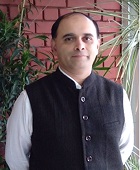 Dr.Kedar Khare, IIT Delhi
Dr.Kedar Khare, IIT Delhi
Title: Does holographic replay provide a true 3D image?
We carefully examine the claim that holographic imaging provides a 3D image. While recording of a hologram involves transfer of information from a 3D volume to a 2D detector, the reconstruction involves starting with 2D data to get back 3D information. The dimensionality mismatch in the 3D reconstruction claim therefore appears to be troublesome since this supposedly extra information is obtained via simple linear back-propagation of the object field. We show that holographic replay is actually a transpose (rather than inverse) operation and the visual 3D reconstruction perception is actually due to the fact that our eye-brain combination has a tendency to concentrate only on sharply focused objects while ignoring diffuse background. The knowledge of the transpose property helps us to formulate a sparse reconstruction problem to generate a "true 3D" image reconstruction as we will illustrate with simulations and some initial experimental results.
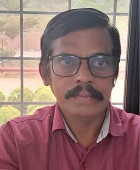 K Diwakar Rao Barc, BARC, Visakhapatnam
K Diwakar Rao Barc, BARC, Visakhapatnam
Title: Noncontact Three-Dimensional Optical Imaging for Precision Metrology & Bio Applications
There has been continuous interest in developing optical techniques for real time 3d imaging. Optical coherence tomography (OCT) is a noncontact three dimensional imaging modality for real time imaging of highly turbid media like biological tissues with micrometer scale resolution. OCT has been successful as a rapid diagnostic tool in ophthalmology and several other nonmedical precision metrology applications are emerging. Digital holographic Microscopy (DHM) is another three dimensional optical imaging technique for label free quantitative phase imaging of microscopic objects & surfaces with nanometric precision. DHM is finding numerous applications in biomedicine, metrology etc. In this talk OCT& DHM will be discussed along with representative applications. Our recent work on developing low cost portable DHM system and aberration compensation in DHM by novel defocus hologram method will also be presnted.
Student Presentations
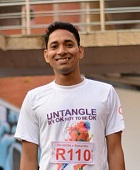 Dhananjoy De
Dhananjoy De
Theme: Nanophotonics, structured surfaces and quantum optics .
Topic of Presentation: Polarization sensitive mode coupling in optical nanocavities.
Active control of mode coupling in metal-dielectric-metal (MDM) based optical nanocavities is challenging. As an alternative approach, a guided mode resonator (GMR) on top of the MDM cavity can be used to control the coupling of resonant modes in a GMR-MDM structure. As the GMR grating is highly anisotropic, this coupling is polarization sensitive as well.
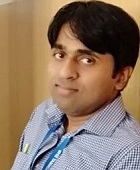 Nitish Kumar Gupta
Nitish Kumar Gupta
Theme: Nanophotonics, structured surfaces and quantum optics .
Topic of Presentation: Direct Determination of Photonic Bandgap Character in Topological Photonic Crystals
The importance of quantized invar-iants is paramount in topological studies, as they not only characterize the global to-pology but keeping track of their evolution also allows us to capture the ex-otic phase transition phenomena. Howev-er, when it comes to the experi-mental determination of topological in-variants and the ensuing ascer-tainment of the topological character of bandgaps, predominantly, we rely on the bulk-boundary correspondence prin-ciple and the limited information it provides. Breaking free from such limitations, we have devised an alternate methodology for direct experimental determination of the topological character of photonic bandgaps, which will be the sub-ject of this talk. We will see that in the case of spatially inversion sym-metric one-dimensional photonic crystals, one can resort to the standard op-tical measurement technique of spectro-scopic ellipsometry, and the in-equivalent topological character of stopbands can be captured in terms of the parametric variations of ellipso-metric phase angle. Specifically, I will demonstrate that depending upon the underlying bulk topological character, the band-edges engender topologi-cally robust phase singularities corresponding to the zeros of the complex reflection ratio in the angular dispersion space.
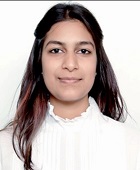 Deeksha S Jachpure
Deeksha S Jachpure
Theme: Fiber and integrated optics, optical communication
Topic of Presentation: Non-linear optics with Erbium-doped fiber
Erbium-doped fiber is the building block of optical communication today but it has not been explored sufficiently for its nonlinear optical characteristics. One property studied here is saturable absorption. This is wavelength dependent and also dependent on the length of erbium doped fiber. The consequence of this is a nonlinear performance of the fiber laser made with erbium doped fiber as the gain medium, under specific conditions. This feature of optical bistability of fiber laser will also be discussed.
 Moirangthem Bikramjit Singh
Moirangthem Bikramjit Singh
Theme: Nanophotonics, structured surfaces and quantum optics.
Topic of Presentation: Identifying the Quantum States of Light Using Statistical Measurement
In this study, we investigate the use of the interaction of light with a two-level atom to determine the quantum state of light. By measuring the excitation state population, we analyze the average, variance, and skewness to gain insights into the characteristics of the quantum state of light. We use the Jaynes-Cumming model as the model system to analyze the dynamics of the light-matter interaction. We believe that this will have important application in Quantum Computing and Quantum Information
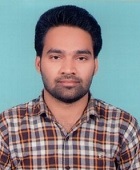 Shivam Shukla
Shivam Shukla
Theme: Biophotonics, imaging and spectroscopy
Topic of Presentation: Testing and validation of a smartphone based fluorescence spectroscopic device for cervical precancer detection
A 3D printed smartphone based device has been designed, fabricated and tested on cervix samples for precancer detection. This device collects polarised fluorescence and polarised elastic scattering spectra from cervix and extracts intrinsic fluorescence spectra. A Random Forest based multi class algorithm has been utilised for classification purpose.
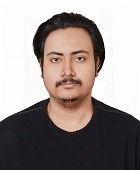 Subhajit Chakraborty
Subhajit Chakraborty
Theme: Biophotonics, imaging and spectroscopy
Topic of Presentation: Quality Measurements of Alcohol-Based Hand Sanitizers: A Photothermal Spectroscopic Approach
Hand sanitizers have become a part of our daily life during post Covid-19 pandemic. The main components of these sanitizers are generally alcohols, and for a hand sanitizer to work properly as a disinfectant, the alcoholic content in the hand sanitizer should be above a critical limit. Because of the heavy demand for these sanitizers, their quality is often compromised by reducing the alcoholic quantity in the solution. Quality control is essential to ensure that consumers are buying and using products that have virucidal activity against COVID-19, as the efficacy of an ABHS is dependent on its alcohol concentration. We propose femtosecond pulse induced thermal lens spectroscopy as a simple yet effective technique for evaluating the efficacy of alcohol-based hand sanitizers. In our experiments, the hand sanitizer was diluted with water to reduce the amount of alcohol in the mixture, and then Photothermal measurements were performed. The Thermal Lens (TL) signal of the solvent is capable of detecting changes in the mixture's alcohol concentration. Our technique, therefore, emerges as a sensitive tool for quality testing of alcohol-based hand sanitizers.
 Bhaswati Singha Deo
Bhaswati Singha Deo
Theme: Biophotonics, imaging and spectroscopy
Topic of Presentation: External attention based deep neural network model for reliable detection of oral cancer from histopathological images
Oral cancer is among the most serious cancers in the world and has a variety of morphological features, making it challenging to manually classify accurately. However, the conventional diagnostic techniques employed by medical professionals can be laborious and error prone. Hence, computer-assisted histopathological image classification is crucial for the early diagnosis of oral cancer. We propose an image classification model known as External Attention Transformer model based on the external attention mechanism to extract distinguishing subtle features from tissue sections containing oral cancer and their normal counterparts. We have used 4946 oral histopathological images classified into two categories: normal and oral squamous cell carcinoma (OSCC). Of the total images, 2435 of them are categorized as normal and 2511 as OSCC. External attention based deep neural network model attained 96.97% classification accuracy. Sensitivity and specificity were recorded as 97.61% and 96.41% respectively. It is found that the effectiveness of artificial intelligence methods for classifying oral cancer has significantly improved in comparison to leading edge methods, and this has a potential for early oral cancer detection.
 Devendra Singh
Devendra Singh
Theme: Biophotonics, imaging and spectroscopy
Topic of Presentation: Chaotic cavity design of a UV-C disinfection chamber for uniform radiation distribution Theme: Biophotonics and imaging
UV-C wavelength (254nm) is used in disinfection chambers to sanitize water, food and various appliance of medical and food industry. For proper sterilization UV-C radiation must reach every spatial location of the chamber uniformly. In commonly available sanitization chambers with cross-section rectangular or circular, radiation dosage may vary in space and even lead to a few spaces with negligible radiation, “dark spots”. We propose and demonstrate the use of a chaotic Bunimovich stadium design chamber which ensures radiation not only uniform distributed within the chamber but also it go through region of interest from nearly all directions. Ray-tracing simulations on a chamber with shape parameters of a chaotic Bunimovich stadium shows uniform radiation distribution across the whole volume. Also, experimentally it is shown that the proposed chamber has more evenly distributed UV-C radiation than a cuboidal geometry. Therefore, this simple design is also useful for air disinfection, as conventional air ducts have “dark spots” which compromise the efficacy of the disinfection.
 Garima Joshi
Garima Joshi
Theme: Nanophotonics, structured surfaces and quantum optics.
Topic of Presentation: Structured surfaces for frequency filtering and antenna gain enhancement
Structured surfaces enable the selection of electromagnetic waves of any specific frequency in reflection or transmission, due to their band-stop or band-pass characteristics. Such frequencyselective surfaces are required in the microwave domain for satellite and space antenna applications, in radar, for shielding in radomes, in defense and in bio medical fields. We discuss a few designs for frequency selective surfaces along with their simulated and measured parameters for the frequency range of GHz to THz. We present an application by integrating the structured surface with a planar antenna and demonstrate an improvement in gain and directivity of the antenna. Even as a stand-alone design, the structured surface is a good candidate for EMI shielding and frequency filtering. While some of the traditional challenges with such surfaces have been in miniaturization, narrowing the bandwidth and/or invariant performance with the angle of incidence, our results suggest interesting design variations to overcome them.
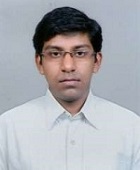 Aritra Paul
Aritra Paul
Theme: Fiber and integrated optics, optical communication
Topic of Presentation: All-SBS fiber-based setup for optical frequency comb generation utilizing a pump recycling technique and comb line isolation by implementing Brillouin amplification
We describe an all-stimulated Brillouin scattering (SBS) fiber-based setup for the generation, amplification, and isolation of frequency components from an optical frequency comb (OFC). The cascaded SBS–OFC is obtained by utilizing pump and Stokes power recycling techniques. A total of >15 comb lines within a 45 dB bandwidth, having an average power of 16 dBm, is observed in the 1550 nm wavelength region of operation. By implementing a polarizer–analyzer setup exploiting the weak birefringence in silica fibers, we amplified and isolated the first Stokes component of the generated comb. The isolated component at 1550.03 nm was amplified by ≈55 dB. In order to verify the isolation of a single comb line, the SBS–OFC is intensity modulated using sinusoidal signals of different frequencies, and the modulation is detected after the comb line isolation. We also observe that with the increase in Brillouin pump power during comb line isolation, the spontaneous Brillouin noise acts as a limitation to the selective amplification process.
 Viren S Ram
Viren S Ram
Theme: Biophotonics, imaging and spectroscopy
Topic of Presentation: Fringe Pattern normalization using GANs
Fringe pattern normalization is an important preprocessing technique required during phase extraction from interferograms. However in practical experiments, it is very difficult task to perform normalization task due to presence of background illumination, noise and amplitude modulation. In order to achieve normalization, a generative deep learning approach has been proposed. Using this model, results came out to be better than the classical approaches that has been proposed earlier.
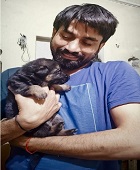 Aman Sharma
Aman Sharma
Theme: Biophotonics, imaging and spectroscopy
Topic of Presentation: Theoretical & Numerical aspect of the Time-Resolved Thermal Lens using Gaussian Beam.
A general study of the thermal lens process for the time-resolved method is presented. Considering all the optical and thermal parameters in the analytical analysis and numerical simulation a comparison has been done. Heat generation and the induced thermal phase shift in the presence of convection have been calculated for the time-resolved studies. Analytical and numerical studies have been further extended for the Power dependence studies, pump beam spot size effect, and Sample Length Limitations for the three cases, single beam effect & dual beam with the same wavelength, and dual beam different wavelength Effects. The quantitative discussion also addresses the convective impact, which includes the convection time and the TL strength at the convection point. The convection impact on the intensity of the probe beam with the variation of spot size, sample length, and pump power has also been addressed.
Research Scholar Day (16 May 2022)
Pictures From the Day
CELP Department Group Photograph Session Along With Dr. Shankar V.Nakhe
| Time | Speaker | Title |
|---|---|---|
| 9.10 to 9.30 am | Aritra Paul | Towards generation of flat-optical frequency comb |
| 9.30 to 9.50 am | Srinivasu Sapireddy | Switching the Structure of Light |
| 9.50 to 10.10 am | Deeksha Jachpure | Dual threshold in Lasers |
| 10.10 to 10.30 am | Soumya Kumari | Hybrid Plasmonic Ring Resonator for Bulk and Affinity Bio-sensing Applications |
| 10.30 to 10.50 am | Shivam Shukla | Design and testing of a smartphone-based spectrometer for collection of Polarized fluorescence and elastic scattering spectra form human cervix |
| 10.50 to 11.10 am | Subhajit Chakraborty | Femtosecond Laser Induced Thermal Lens for Probing Molecular Interactions |
| 12 onward | Dr. Shankar V.Nakhe | Indigenous Laser and Photonic Systems for Utilization in Nuclear Power and Societal Applications |




















.jpeg)















